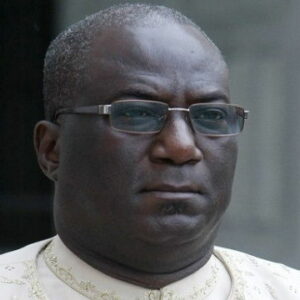Siaka Probyn Stevens, Sierra Leone’s third Prime Minister, eventually became the country’s first President. He began his career with the Sierra Leone Police Force after completing his secondary education, then moved on to work as a mine worker before founding the United Mine Workers Union. Later, he entered politics and became Minister of Lands, Mines, and Labour for the Sierra Leone People’s Party (SLPP) in the Protectorate Assembly. He left the SLPP following a series of conflicts over leadership problems, and created the People’s National Party, which dismissed him after a disagreement over some political concerns. After that, he created his own All Peoples Congress (APC) and served as opposition leader until the APC won the 1967 national elections. He was sworn in as Prime Minister, but was toppled in a military coup just days later, only to be recalled after a short period of time. He later became the first President of Sierra Leone once the republic constitution was enacted. During his presidency, he was chastised for his authoritarianism, but his later years saw a gradual reduction in cultural and regional tensions, as well as the formation of a more unified political community in the country. Despite attempted coups and near-constant accusations of terrible incompetence and governmental corruption, he managed to stay in power.
Childhood and Adolescence
He was born in the Moyamba area of Sierra Leone on August 24, 1905, to a ‘Limba’ father and a ‘Mende’ mother. He spent the majority of his boyhood in Freetown, Sierra Leone’s capital and largest city.
He acquired his early schooling in Freetown’s primary institutions. Later, he completed his secondary school at the ‘Albert Academy’ in Freetown.
He joined the Sierra Leone Police Force after finishing school and served there from 1923 until 1930. He ascended to the rank of First Class Sergeant and Musketry Instructor during this time.
He worked on the Sierra Leone Development Company (DELCO) railway, which connected the Port of Pepel with the iron ore mines at Marampa, from 1931 to 1946. He co-founded the ‘United Mine Workers Union’ in 1943.
He was elected to the Protectorate Assembly in 1946 to promote the interests of workers. He studied ‘Labour Relations’ at Ruskin College the following year.
He was elected to the Legislative Council in 1951 after co-founding the Sierra Leone People’s Party (SLPP). He became the ‘Minister of Mines, Lands, and Labour’ a year later, representing the SLPP in the Protectorate Assembly, a position he held until 1957.
He was elected to the House of Representatives as a member for the Port Loko constituency in 1957, but lost his seat the following year due to an election petition.
He was a ‘Member of Parliament of Sierra Leone’ from the Western Area Urban District from 1958 to 1962.
He left the SLPP after conflicts with its leadership, co-founding the “People’s National Party” (PNP), of which he was the first Secretary-General and Deputy Leader. He participated in the London Independence Talks as the Deputy Leader of the PNP, which had then become part of the UNF, in 1959, when the United National Front (UNF) government was created.
Following the talks, he was the only delegate who refused to sign the Independence Agreement, and upon his return, he was ousted from the PNP. Then he founded the EBIM (Elections Before Independence Movement), which later became the APC (All People’s Congress).
His party became the biggest opposition party in the 1962 general elections, winning 16 seats, and he was elected to parliament as a member of Freetown West II. He served as the Mayor of Freetown from 1962 to 1966.
APC won by a razor-thin margin in the 1967 general elections, making him Sierra Leone’s third Prime Minister. However, he was arrested after a military coup just minutes after gaining office. In 1968, he reclaimed the position of Prime Minister after a brief period of military administration.
The House of Representatives accepted a republican constitution that was submitted in April 1971. He became the first President of the Republic of Sierra Leone on April 21, 1971, with broad executive and legislative responsibilities.
In 1973, the Republican Constitution had its first general elections, which were marred by violence and political intimidation. As a result, the SLPP, the opposition party, withdrew its nomination, handing the APC all 85 House of Representatives seats.
He was re-elected as President in 1976 with no opposition.
He was sworn in for a second seven-year term in 1978, two years after being re-elected for a five-year term. In Sierra Leone, the same year saw the implementation of a one-party constitution and the demise of opposition parties.
He left office on November 28, 1985, at the end of his term.
Personal History and Legacy
He was married to Rebecca Stevens, with whom he had eleven children.
At the age of 82, he died in Freetown, Sierra Leone, on May 29, 1988.
Estimated Net Worth
Siaka Stevens is one of Sierra Leone’s wealthiest former presidents and one of the country’s most popular former presidents. Siaka Stevens’ net worth is estimated to be $1.5 million, according to Wikipedia, Forbes, and Business Insider.


